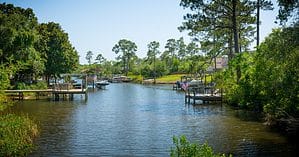The Outer Banks of North Carolina are home to 200 miles of barrier islands running alongside the coast and made entirely of sand. Undeniably, the Outer Banks has something for everyone. Shops, recreation, and local seafood, plus the wild beauty of the coastal ecosystem. In addition to recreation and wildlife, the Outer Banks is known for its rich history. The first English settlement was at Roanoke Island, and the site of the first powered airplane flight by the Wright brothers was on Bodie Island.
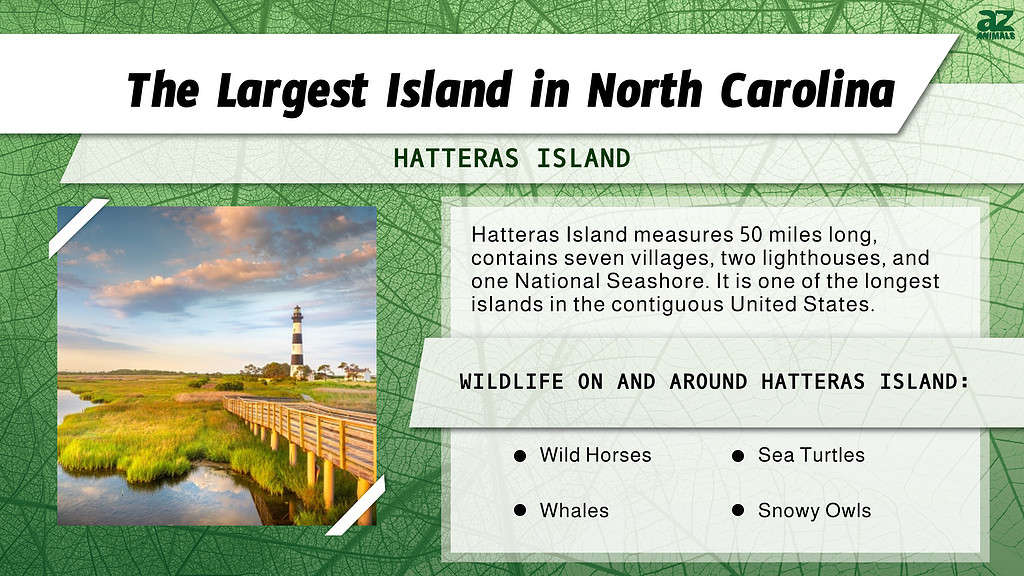
But what is the largest island in North Carolina, and why is it known as a natural wonderland? Read on to find out.
What is the Largest Island in North Carolina?
The largest island in North Carolina is Hatteras Island, with 33 square miles of land. Measuring about 50 miles long, if you follow the curve of the land, it’s one of the longest islands in the contiguous United States. Hatteras Island contains seven villages, two lighthouses, and one National Seashore. Its population is about 4,000, although it gets many tourists visiting throughout the year.
About Hatteras Island: The Largest Island in North Carolina
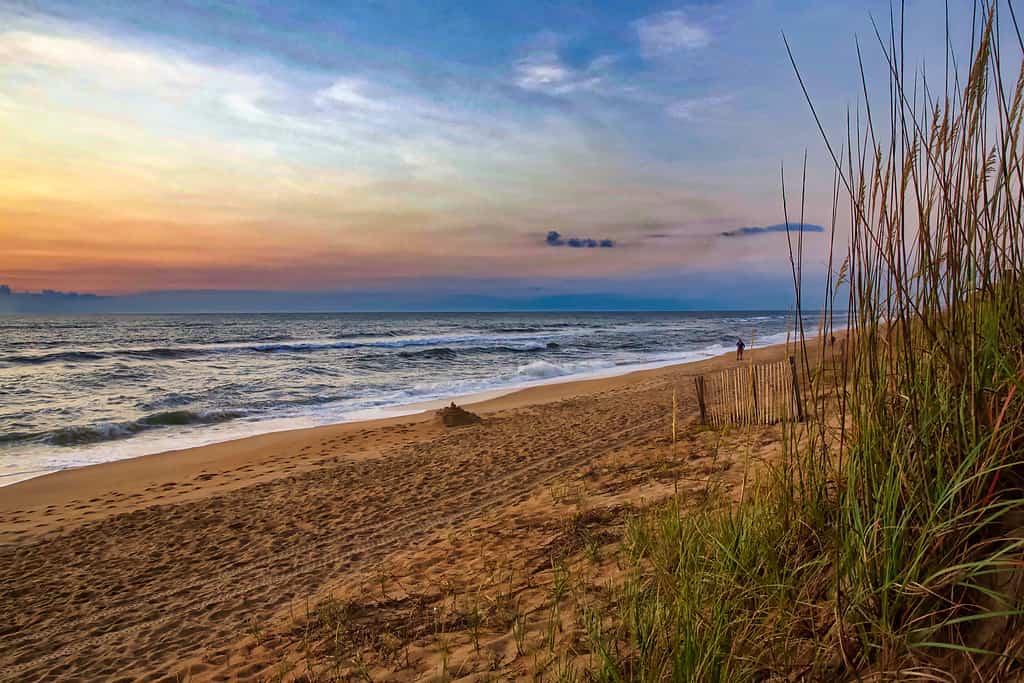
The largest island in North Carolina is Hatteras Island, with 33 square miles of land.
©Jeremy Tyree/Shutterstock.com
Hatteras Island is a barrier island off the coast of North Carolina. North Carolina’s barrier islands, known as the Outer Banks, are landforms made of sand and formed by waves and tides. The islands protect the mainland from the brunt of ocean waves and storms. However, because of this, Hatteras Island is eroding.
How Has Erosion Affected Hateras Island?
The island is at 25% of its original width as of 2014. According to the National Parks Conservation Association, Cape Hatteras National Seashore is losing up to 13 feet of shoreline per year. This is due to the natural phenomenon of coastal erosion, but the process is sped up because of climate change.
History of Hatteras Island
Hatteras Island has a fascinating history, from lost colonies to shipwrecks, to pirates. Shipwrecks off the coast of the island were so common it’s called the “Graveyard of the Atlantic.” Also, the notorious pirate, Blackbeard, is said to have had a hideout on nearby Ocracoke Island, which is a 60-minute ferry ride south of Hatteras Island.
Hatteras Island was established in 1937, but its history goes back much further. Historians believe that the island’s first residents date back to 500 AD. Originally known as Croatoan Island, the area was involved in one of the most notorious cases of missing persons in the country’s history.
The famous story involves the disappearance of an entire colony, which had been established on nearby Roanoke Island. The settlers arrived in 1587, and then disappeared in 1590, having only been in the settlement for a few years. Moreover, the only clues left behind were the words “Croatoan” carved into the fort’s gatepost and the letters “Cro” etched into a tree.
Over the years, historians have had several theories on what happened to the colonists. Some believe they may have been attacked by Native Americans, or they died of starvation or disease. However, archeological findings on Hatteras Island point to the possibility that the colonists simply left Roanoke for nearby Hatteras Island, where they lived peacefully with the friendly Native Americans.
Things to do on Hatteras Island
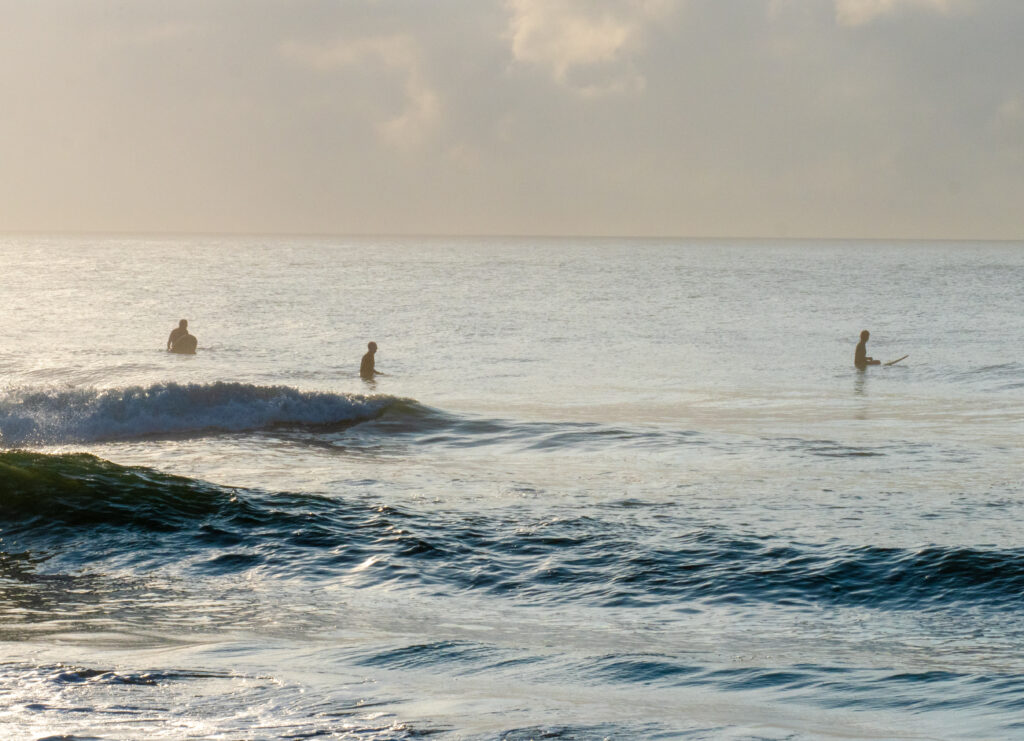
Surfing is a popular pastime on Hatteras Island.
©iStock.com/Kyle Little
Hatteras Island is unique among North Carolina’s barrier islands. Because the majority of the land is protected by Cape Hatteras National Seashore, development of the island has been limited. Although there are seven villages on the island, the woods, dunes, marsh, and beaches in between remain wild and untouched.
Hatteras Island includes seven villages where visitors can dine, rent bikes, charter boats, windsurf, rent watersport gear take lessons, or many more activities. The villages include the following:
- Rodanthe
- Waves
- Salvo
- Avon
- Buxton
- Frisco
- Hatteras Village
There are many things to do on the island. One of the most popular is to climb all 257 steps of the Cape Hatteras Lighthouse in Buxton. The lighthouse has a storied history. Once lit by whale oil, it’s been rebuilt, and the entire structure was moved 2,900 feet to a new location to keep it away from the eroding beach in 1999. From the top, visitors can enjoy stunning views from one of the world’s tallest lighthouses, and learn the history of the fascinating structure.
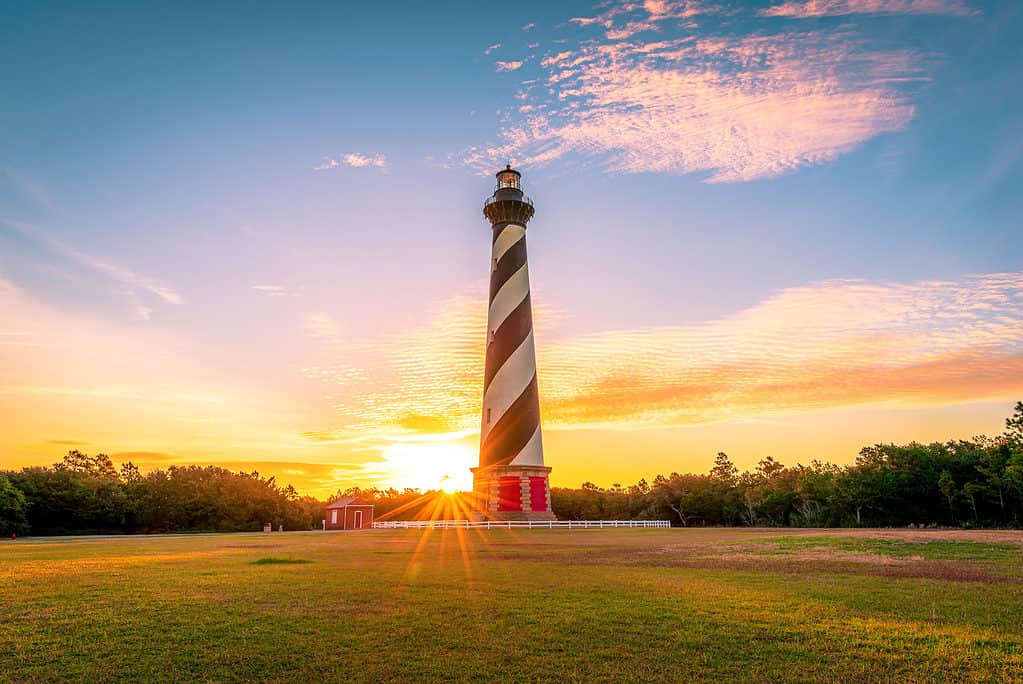
Cape Hatteras Lighthouse is one of Hatteras Island’s top attractions.
©Chansak Joe/Shutterstock.com
Other activities include charting a flyfishing tour, wildlife watching, surfing, horseback riding, swimming, kayaking, standup paddleboarding, kiteboarding, or just relaxing on the soft, sandy beach. Further, there are plenty of beach homes and rentals on the island. Or, for those who love waking up outdoors to the sound of ocean waves, four separate campgrounds are on the island.
Hatteras Island is also one of the few beaches in the Outer Banks where vehicles are allowed. Several establishments rent Jeeps or 4×4 vehicles for tourists to be able to reach further destinations along the beach for sightseeing, wildlife watching, or fishing excursions.
Outer Banks Wildlife
The Outer Banks have a large variety of wildlife and several refuges that protect the unique coastal habitats. Hatteras Island is an excellent spot to view wildlife due to the many miles of untouched beaches, marshes, and inland areas.
Birds of Hatteras Island
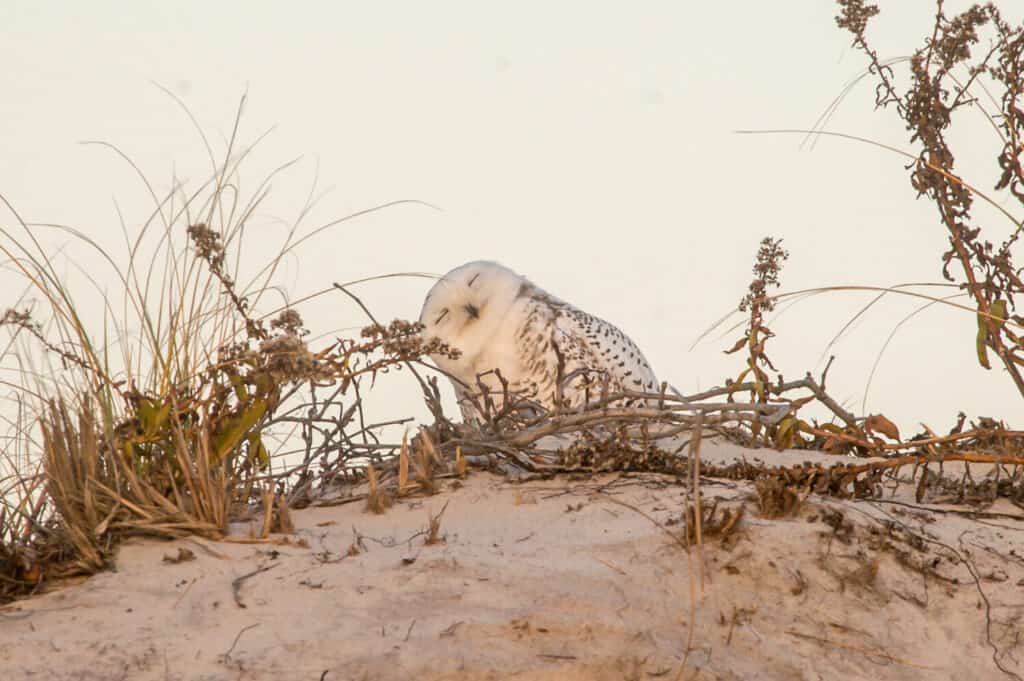
Snowy owls from the faraway Arctic tundra sometimes stop off on Hatteras Island during migration season.
©Susan L. Angstadt/Shutterstock.com
Visitors interested in wildlife can visit Pea Island National Wildlife Refuge, a sanctuary for over 370 species of birds. Some of the birds you may find include:
- Swans
- Herons
- Egrets
- Laughing gulls
- American Oystercatcher
- Pelicans
- Bald eagles
- Peregrine falcons
- Eurasian wigeon
- Ross’s goose
- Snowy owls
Sea Turtles
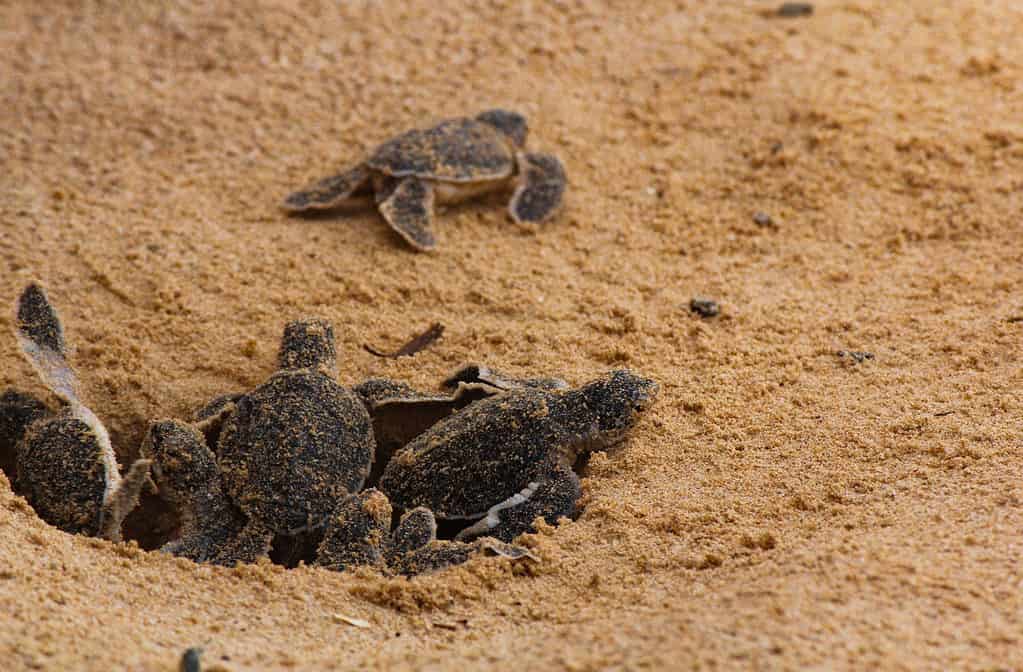
Baby sea turtles hatch from their nests and head for the brightest source of light, which is the open ocean as long as artificial lights do not confuse them.
©SLSK Photography/Shutterstock.com
Five species of sea turtles nest on the island, with the loggerhead being the most common. Other species include leatherback, hawksbill, Kemp’s Ridley, and green. Every year, the females return to the beaches they hatched on to lay their eggs. The hatchlings leave the nest at night and head for the brightest horizon. When no artificial lights are on, the brightest spot is the Atlantic Ocean, which reflects the stars and moonlight. Guests and homeowners are asked to keep all house lights off, and blinds closed to avoid confusing the baby turtles.
Dolphins and Whales
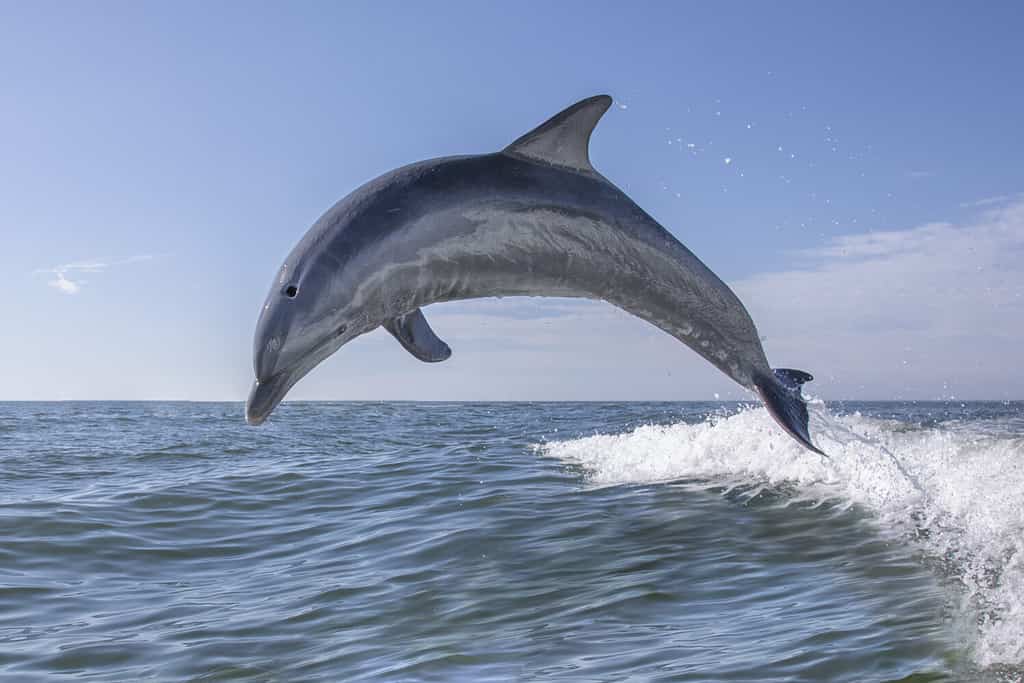
Bottlenose dolphins swim in the Atlantic waters off the Outer Banks coasts year round.
©Tory Kallman/Shutterstock.com
Beachgoers can spot dolphins and whales swimming off the coast of the island. The most commonly spotted are bottlenose dolphins and humpback whales. However, you may also see sperm whales and the North Atlantic right whale. A critically endangered species, there are only an estimated 350 right whales left in the world.
Wild Horses
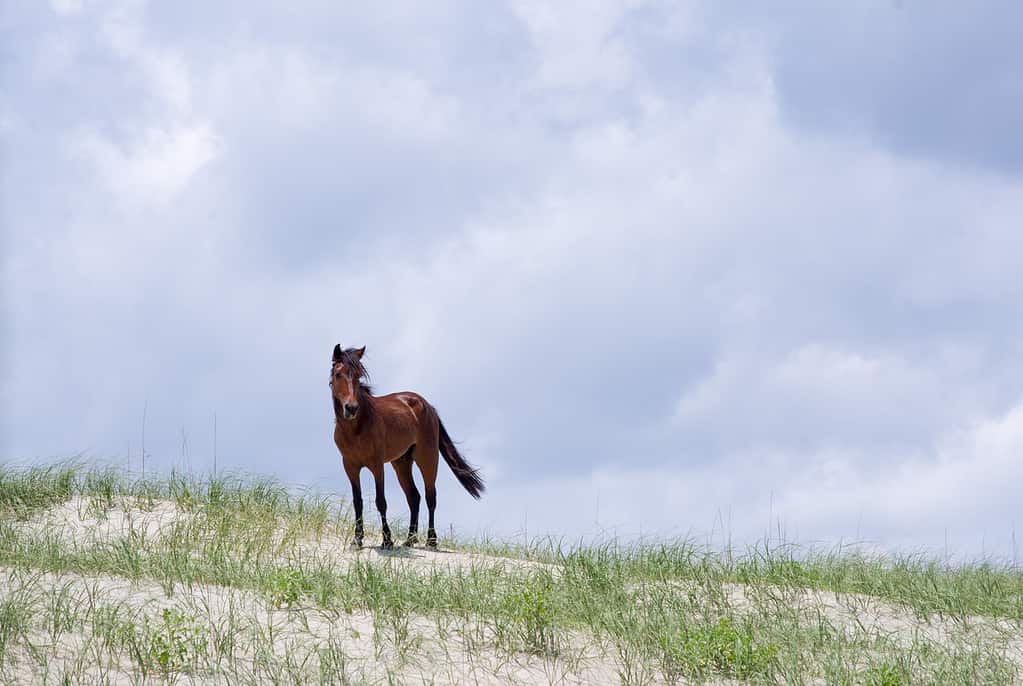
The state
horse
of North Carolina, the wild Spanish Colonial Mustang, roams free on the Outer Banks beaches.
©BHamms/Shutterstock.com
For over 500 years, wild horses have strolled the beaches of the Outer Banks, including Hatteras Island. Surviving both hurricanes and humane settlers, the horses prevail. A 180-acre enclosure protects a wild herd on the nearby island of Ocracoke. There is a parking space for visitors near the Hatteras Island ferry, where you can spot the Ocracoke Banker Ponies if they’re near the parking area. Descended from Spanish mustangs that survived a shipwreck, these horses have lived on the island for hundreds of years.
Seals
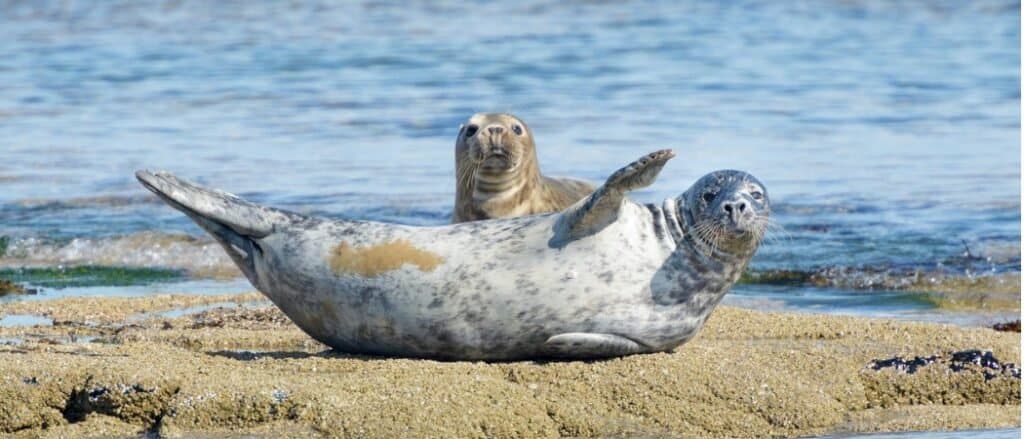
Harbor seals sometimes take a rest on the Outer Banks beaches in the winter.
©iStock.com/AndreAnita
During winter, seals may lounge on the shores of Hatteras Island to rest up between feedings. The most commonly spotted is the harbor seal. Although gray, hooded, and harp seals are in the area as well. The seals that come to the beaches here are usually young and in need of a rest.
Mammals on Hatteras Island
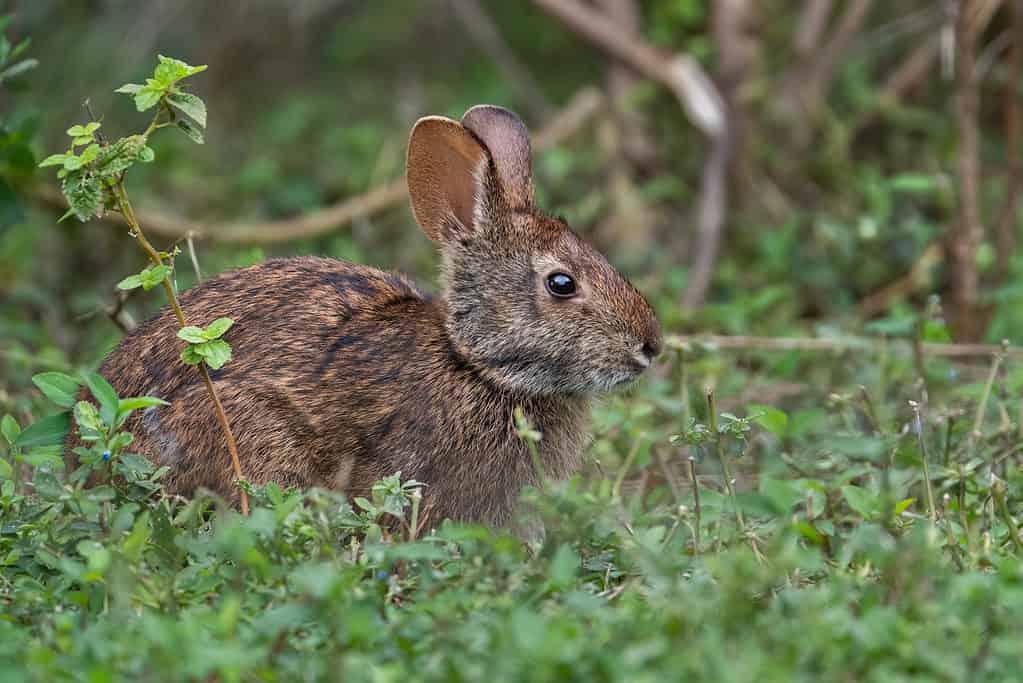
The Marsh rabbit is a species of cottontail rabbit that lives in salt and brackish marshes.
©iStock.com/MattCuda
Aside from the diverse marine life, the island is home to marine forests, wetlands, shrub thickets, and dunes. These areas provide habitat for many mammal species including:
- Squirrels
- Marsh rabbits
- Coyotes
- Muskrats
- White-tail deer
- Red and gray foxes
- Raccoons
The photo featured at the top of this post is © Chansak Joe/Shutterstock.com
Thank you for reading! Have some feedback for us? Contact the AZ Animals editorial team.






